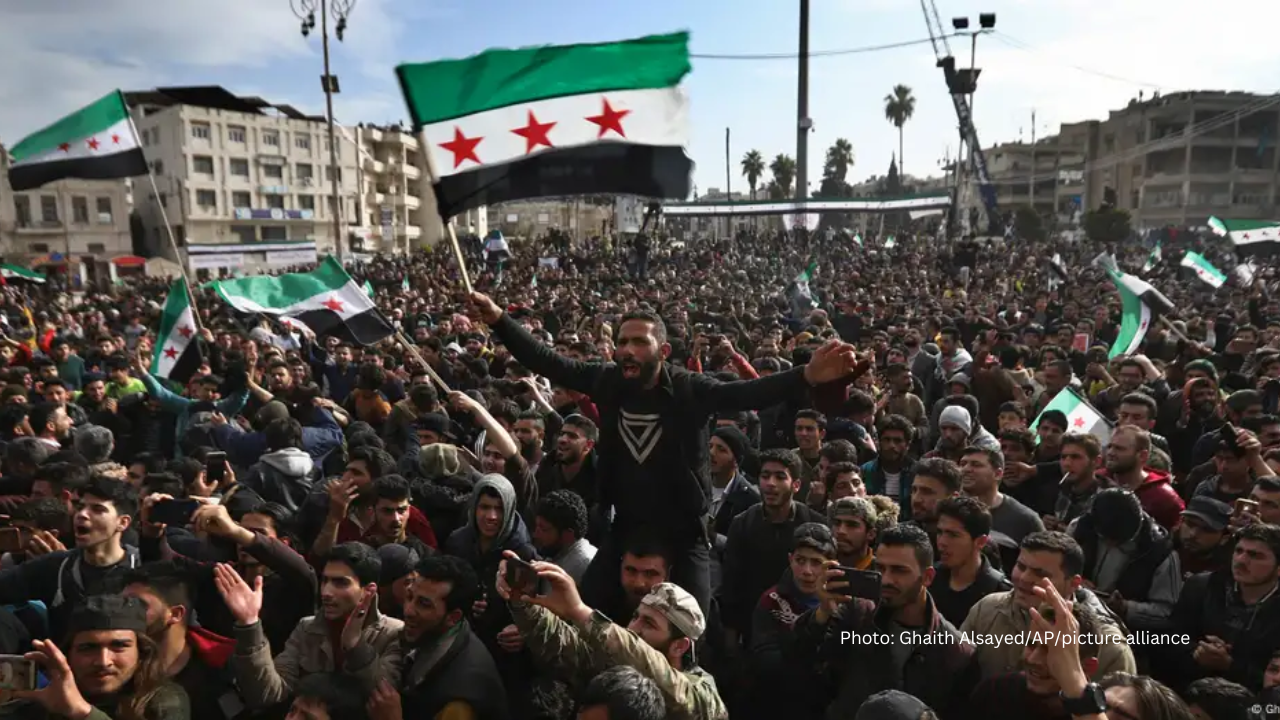Assad's Exit: Syria’s Tumultuous Road to Rebirth
Depanjali Roy | 30 December 2024
If not in a similar way, but in the same year Bangladesh and Syria got their freedom from decade long dictatorship. Bangladesh witnessed it in the month of August and now Syria owned it in December, when Bashar al-Assad fled Syria with its family to Russia. He was in power for 24 years. During his rule the Syrian Civil War started and continued for 13 years which cost the lives of 0.5 million people and 10 million people lost their homes and belongings and had to flee the country to secure their lives. Though the people of Syria are free from fear, still the concern is to build the country through transformation with the political parties and distribute the power for the wellbeing of the general public.
For five decades the Asad family ruled Syria, as Hafez al-Assad, father of Bashar al-Assad became the President of Syria in 1971, as the leader of Ba'ath Party. After coming to power Hafez al-Assad declared one political party rule, so Ba'ath Party remained the only political party in Syria. He ruled Syria for 29 years before his death in 2000. During his period human rights violation, using military power to suppress the people, suppression of political opposition, violation of freedom of expression took place. He also maintained close ties with Russia, which helped the regime in the civil war as well.
In December after the rebel group took over Damascus, Bashar al Assad and his family had to flee the country. At first they were just vanished, no speculations were received on their whereabouts. But the next day (Date), if it was confirmed that, he fled to Russia with his whole family. As an alliance of Bashar al Assad Russia gave them the security after it was a matter of fear to survive in Syrian land.
Now, the international dynamic will change, as the stance of Russia, Iran, Turkey and USA, all have to lose something or gain out of it.
Iran can be in a very critical situation. The attack on Israel on October 7, 2023, is undertaken to be led by Iran. However, Iran never accepted any involvement in the attacks. In July 2024, Iran's influence in the region faced a significant setback when Ismail Haniyeh, the former leader of Hamas, was assassinated in an explosion during his visit to Tehran. Yahya Sinwar took his place as the next leader, but he was also killed by Israel Defense Forces (IDF) in October 2024. Later Hassan Nasrallah, who was the former leader of Hezbollah, was also killed by the Israeli military through air strike. Now Iran has no other way but to think about security as the “Axis of Resistance” between Syria and Iran no longer exists. During the Assad regime, Iran used Syria as a corridor to deliver logistics and weapons to Hezbollah and Hamas in Gaza which helped the Assad regime to ensure security from its enemies, on the other side Iran could expand its influence across its border. Iran has already shifted its stance toward Syria, adopting a more conciliatory approach toward the new leadership it once labeled as "terrorists." The Iranian foreign minister has reached out to the Syrian government and recognized “legitimate opposition groups,” signaling a willingness to engage in negotiations.
On the other hand, the Kurds on the North-East side of Syria are conscious about their existence even after the fall of Assad regime. During the rule of Bashar al- Assad the Kurds were tortured, so they have formed a semi-autonomous government. Though after December 9, 2024 many people from the Kurdish community left Damascus for the safety of their family. It proves that the Kurdish community is skepticalof their existence in the new Syria. Well, it's kind of similar to how the minority communities experienced after Sheikh Hasina fled from Bangladesh on August 5, 2024. The Kurdish population, historically spread across Iran, Iraq, Turkey, and Syria, has long aspired to establish an autonomous state independent of these nations. Amid the evolving geopolitical landscape, President Recep Tayyip Erdogan of Turkey is likely to exploit this situation to consolidate control over Kurdish territories near Turkey's borders. In this context, Kurdish officials and analysts emphasize that maintaining their territorial hold will depend heavily on support from the United States and Western governments. Without such backing, they may face intensified conflict with rebel factions supported by Turkey.
The USA wants a ceasefire between the Turks and the Kurds. The main goal of the USA was to “make sure that ISIS was in a box”, said by Secretary of State Antony J. Blinken. According to the USA, Kurdistan Workers' Party (PKK), which is a Kurdish militant political organization, holds the mission similar to ISIS. His meetings in Turkey included talks with the foreign minister, HakanFidan, who earlier last week said that “any P.K.K. extension in Syria cannot be considered a legitimate partner.”. With the help of American troops, last week, Kurdish forces and Syrian National army came to a ceasefire in the area of Manbij, which they had conquered from Islamist groups in 2016. Still the Kurdish commander expressed his concern on the existence of their community. To keep a balance General Abdi, the Kurdish commander, wants to build up a good relation with Hayat Tahrir al-Sham (HTS) to mend the gaps.
In this scenario, Turkey is likely to closely monitor the dynamics between Hayat Tahrir al-Sham (HTS) and the Kurdish community. Ankara's "conflict of interest" could potentially escalate into a full-scale military offensive against Kurdish forces. Such a move, however, would risk triggering international sanctions and complicate Turkey's relations with the U.S. administration, presenting significant diplomatic and economic challenges.
Depanjali Roy is the Chief of Staff at CGS
Views in this article are author’s own and do not necessarily reflect CGS policy.
